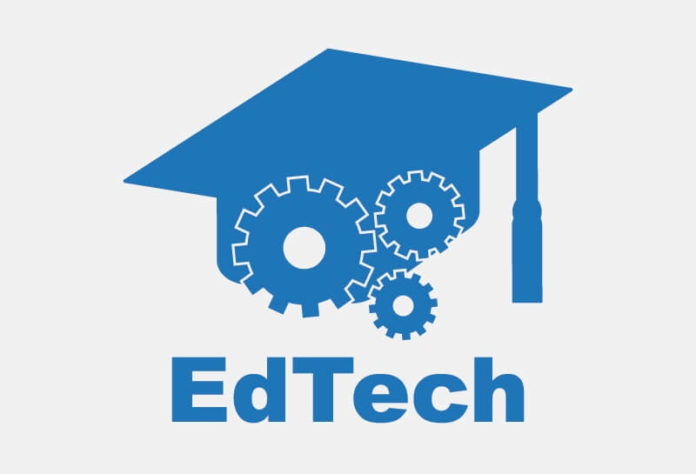The global Educational Technology industry is growing impressively fast. In 2019, its market size was $76.4 billion. It is expected to reach a compound annual growth rate of 18.1% by 2027. Another research found that 98% of businesses in the U.S. will have adopted EdTech by the end of 2020.
The Coronavirus pandemic contributes to the rise of EdTech. With schools, colleges, universities, and educational centers shut, millions of people from all around the globe have shifted to virtual learning. That creates the necessity for faster creation and adoption of advanced educational technologies.
Let’s see how EdTech is transforming education.
VR Is Changing the Way We Learn
Virtual reality tools bring experiences to life for students. They create a virtual world, providing more than the mere acquisition of information. By being immersed in what they are learning, students are motivated to participate actively.
VR tools enable experiential learning by providing learners with a better sense of space. They allow them to travel through space and time. They learn about different destinations or important events by living them.
Most importantly, virtual reality eliminates the gaps between theory and practical knowledge and reduces the cognitive load needed to process the information. Instead of passively sitting, users can learn by doing. A tiny VR gadget can act like an operating theater or a science lab.
That can be particularly important in employee training. For example, KFC uses a VR training simulator that trains staff on how to prepare chicken.
Artificial Intelligence Delivers Automation
Artificial intelligence is used in many sectors, from candidate screening to banking. Education is no exception.
AI simplifies teachers’ jobs. According to the 2019 report, even though teachers enjoy their jobs, they struggle with work-life balance. That is where AI steps in. For example, optical scanner apps can grade multiple choice exams automatically. That helps teachers automate manual and repetitive tasks. They will be able to focus on what matters the most – their students.
Artificial intelligence personalizes education, too. It enables students to learn at their pace. Based on their knowledge level and progress, AI tools create individualized learning schedules. One of the simplest examples of how AI enhances learning is Duolingo, a language learning app. It develops personalized placement tests, adapting questions based on learners’ previous answers. It also offers an AI chatbot, which is perfect for practicing language skills.
Cloud Platforms as the Major Enabler of Remote Education
With the rise of the cloud and digital content, students are not limited to local schools anymore. They now can access their desired content, irrespective of their location.
For example, say you are a golf enthusiast. In the past, to learn the basics of this sport, you needed to subscribe to a monthly golf magazine or purchase expensive DVD lessons. Today, that process is simpler. With the rise of educational websites, you can now watch instructional golf videos for free and even connect with a community of people sharing your passion.
With online learning platforms, such as Coursera or Udemy, learners do not have to purchase packages of courses that often do not meet their needs and expectations. With these platforms, they can buy the training programs they need.
By using online learning platforms, students can access digital educational material instead of purchasing it. Even renowned universities, such as MIT or Harvard, offer massive open online courses (MOOCs). That is particularly important in the era of Coronavirus that is changing education for good.
EdTech Offers Opportunities for Upskilling
Education does not end after school. In the era of massive tech disruption, continuous learning has become a priority. Statistics back me up on that. According to the World Economic Forum, over 50% of staff will require reskilling or upskilling to do their jobs by 2022.
That is where advanced EdTech solutions shine. With many upskilling services delivered via the cloud, workers can learn new skills. That allows them to grow careers faster.
Upskilling services benefit employers, too. Statistics say that losing a top employee can cost as much as 60% of their annual salary. Therefore, instead of hiring additional staff or replacing staff, companies can invest more in employee training. That way, they can both reduce costs and maximize employee satisfaction and retention.
Educational Technology is the Future of Learning
The COVID-19 pandemic is a wake-up call for educators. The abovementioned examples of universities switching to online courses prove that education can and should move beyond the formal educational institution.
The growth of the EdTech industry is the enabler of virtual learning. It provides opportunities for highly immersive, personalized, and experiential learning. Most importantly, it ensures that education is available to everyone, irrespective of their financial situation or geographical location.
Any thoughts on the impact of the EdTech industry on the future of education? We are listening!
Eve Anderson is a marketing specialist turned blogger. Interested in sports and exciting travel destinations. Love to share content that can inform people.
EdTech stock photo by Nonchai/Shutterstock







